A lush, thriving garden isn’t just about bright sunlight and colorful blooms. Many homeowners have shaded areas in their yards that are often overlooked when planning landscaping. Fortunately, there are many shrubs that thrive in partial to full shade, offering greenery, texture, and even flowers to brighten darker garden spaces. Planting shade-loving shrubs can transform dull corners of your yard into vibrant, healthy, and visually appealing areas.
This guide highlights five of the best shade-tolerant shrubs and provides practical tips for planting, care, and maintenance.
Why Shade-Loving Shrubs Are Important
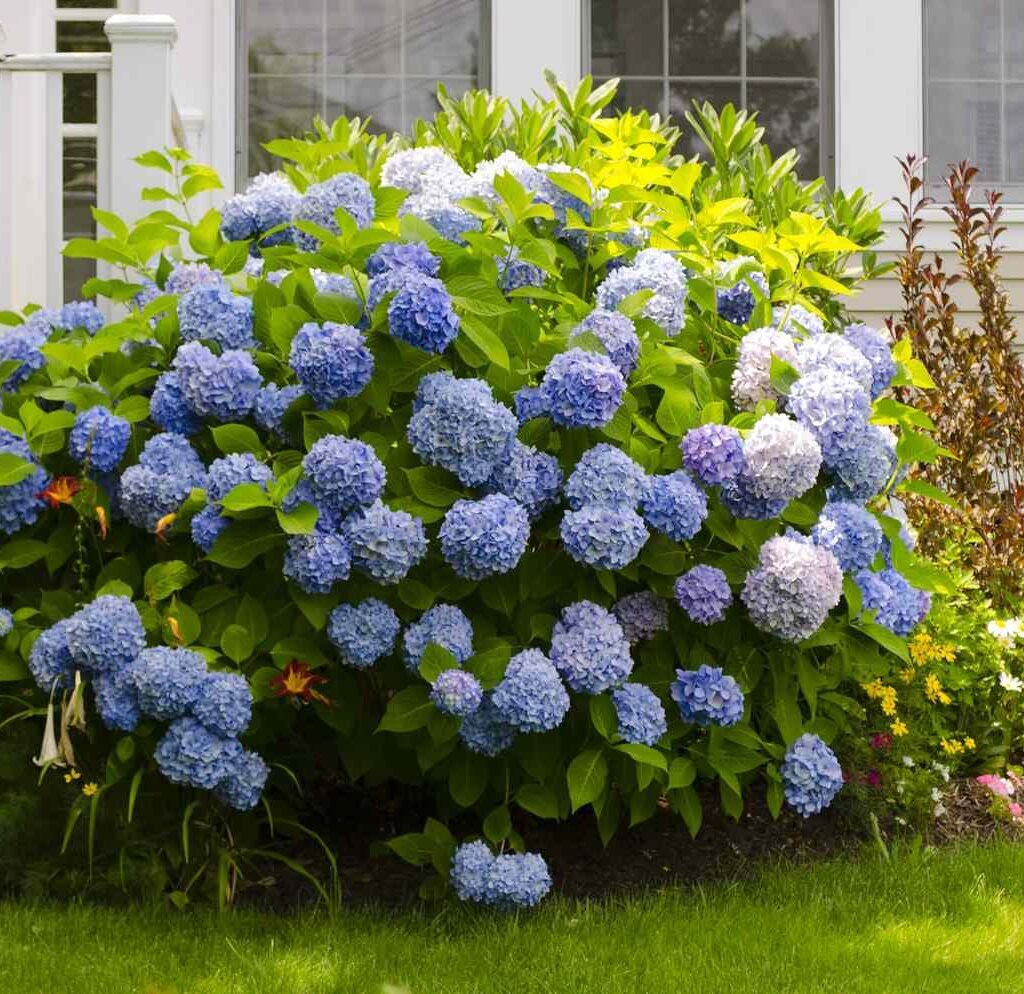
Shade-loving shrubs are essential for yards that don’t receive direct sunlight throughout the day. These plants:
- Enhance Aesthetics: Provide texture, color, and structure to shaded garden areas.
- Prevent Soil Erosion: Shrubs with dense root systems help stabilize soil.
- Support Wildlife: Provide habitat and food for birds and beneficial insects.
- Low-Maintenance Options: Many shade-tolerant shrubs require minimal pruning and thrive with less sunlight.
- Complement Other Plants: Pair well with ferns, hostas, and other shade-loving perennials.
Understanding these benefits makes it easier to select the right shrubs for shaded areas in your yard.
1. Hydrangea (Hydrangea macrophylla)
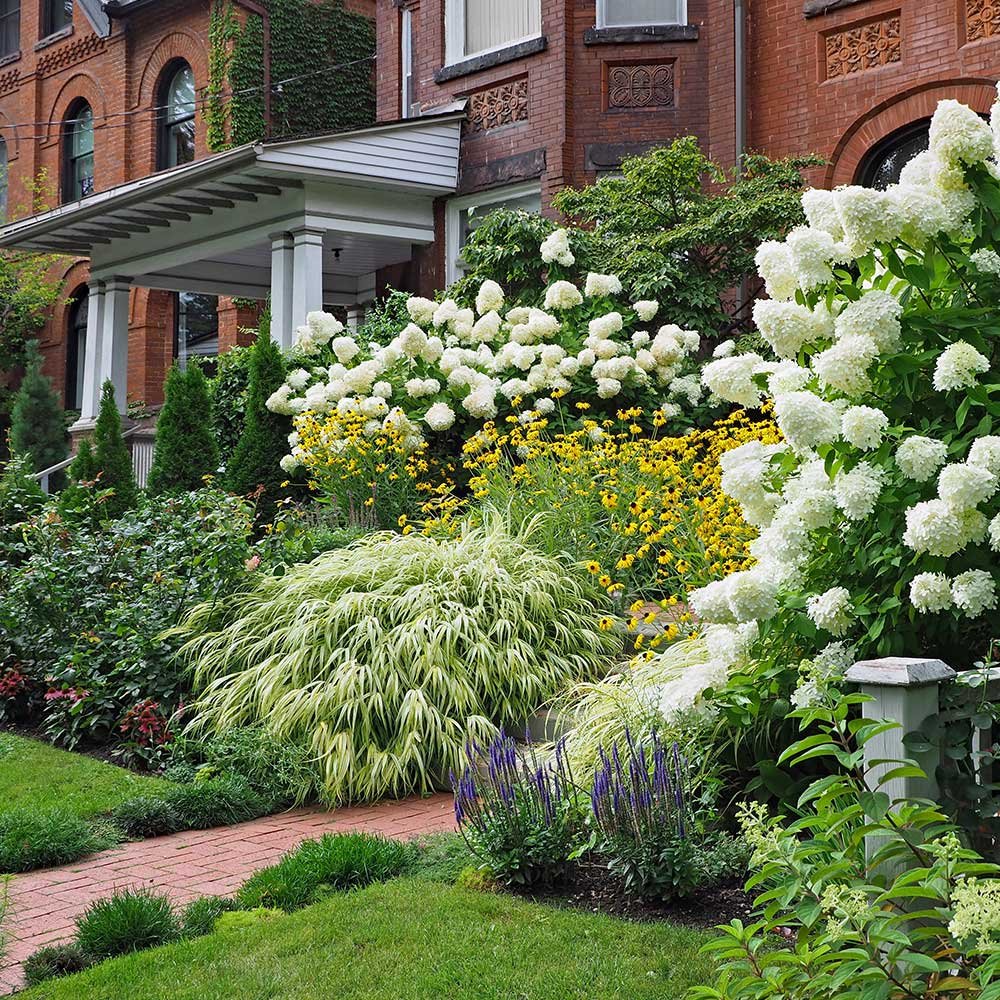
Hydrangeas are classic shade-loving shrubs prized for their large, showy flower clusters.
Features
- Flower Colors: Pink, blue, or white depending on soil pH.
- Foliage: Dark green, glossy leaves.
- Size: 3–6 feet tall and wide, depending on variety.
Growing Tips
- Sunlight: Prefers partial shade; too much sun can scorch leaves.
- Soil: Moist, well-draining, slightly acidic soil.
- Watering: Keep soil consistently moist, especially during summer.
- Pruning: Prune after flowering to maintain shape and encourage blooms next season.
Why It Works in Shade: Hydrangeas tolerate low light while producing stunning flower clusters, making them a top choice for shaded yards.
2. Rhododendron (Rhododendron spp.)
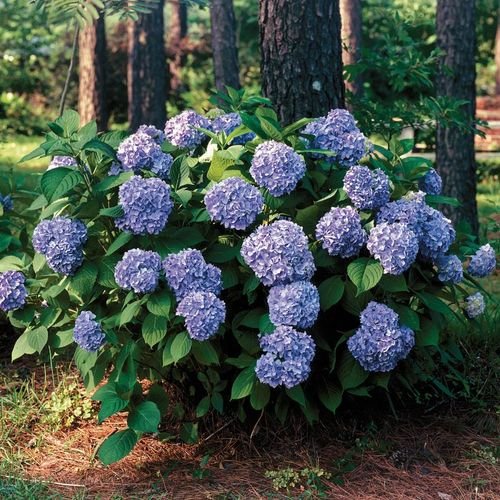
Rhododendrons are evergreen shrubs with large clusters of showy blooms that brighten shaded landscapes.
Features
- Flowers: Bell-shaped blooms in white, pink, red, or purple.
- Foliage: Glossy green leaves that remain year-round.
- Size: 3–10 feet tall depending on variety.
Growing Tips
- Sunlight: Partial shade; protect from hot afternoon sun.
- Soil: Acidic, well-drained soil rich in organic matter.
- Watering: Provide consistent moisture, especially in spring and summer.
- Pruning: Remove dead or weak branches after flowering.
Why It Works in Shade: Rhododendrons thrive under trees or in dappled light, providing long-lasting beauty in low-light conditions.
3. Azalea (Azalea spp.)
Azaleas are closely related to rhododendrons and are celebrated for their vibrant spring blooms and compact growth.
Features
- Flowers: Bright clusters of pink, red, white, or purple blooms.
- Foliage: Evergreen or deciduous leaves depending on variety.
- Size: 2–6 feet tall and wide.
Growing Tips
- Sunlight: Partial shade; morning sun with afternoon shade is ideal.
- Soil: Acidic, well-drained, organic-rich soil.
- Watering: Keep soil moist, especially during dry periods.
- Pruning: Light pruning after flowering maintains shape.
Why It Works in Shade: Azaleas flourish in shaded areas, producing spectacular flowers without direct sunlight, making them perfect under trees or along shaded pathways.
4. Japanese Pieris (Pieris japonica)
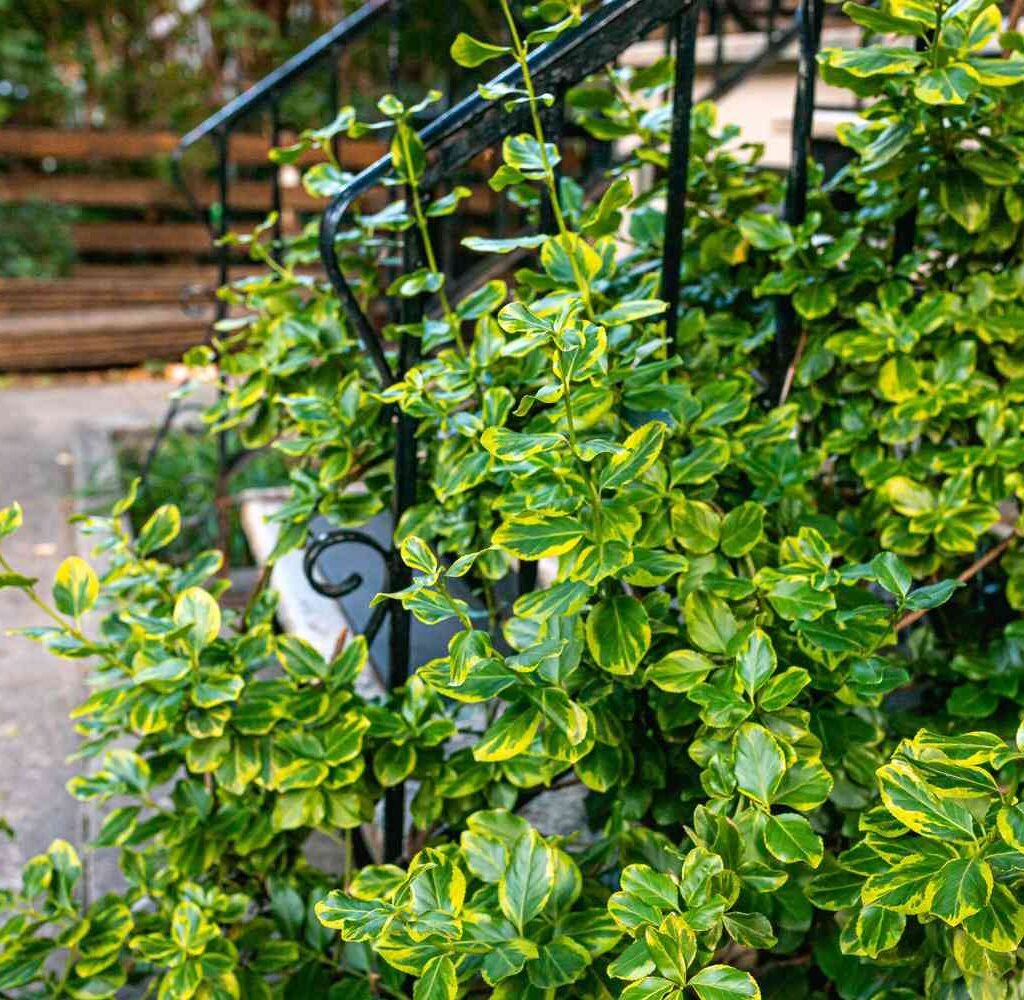
Japanese pieris, also called lily-of-the-valley shrub, is an elegant evergreen shrub with cascading flower clusters and colorful new foliage.
Features
- Flowers: White or pink bell-shaped clusters in early spring.
- Foliage: Glossy green leaves; new growth often appears red or bronze.
- Size: 6–10 feet tall with a dense, bushy habit.
Growing Tips
- Sunlight: Partial shade to full shade; avoid harsh afternoon sun.
- Soil: Acidic, moist, well-draining soil.
- Watering: Consistent watering; avoid letting soil dry out completely.
- Pruning: Minimal pruning required; remove dead branches after flowering.
Why It Works in Shade: Its colorful foliage and delicate flowers add interest to shaded areas, while evergreen leaves maintain garden structure year-round.
5. Sweetbox (Sarcococca spp.)
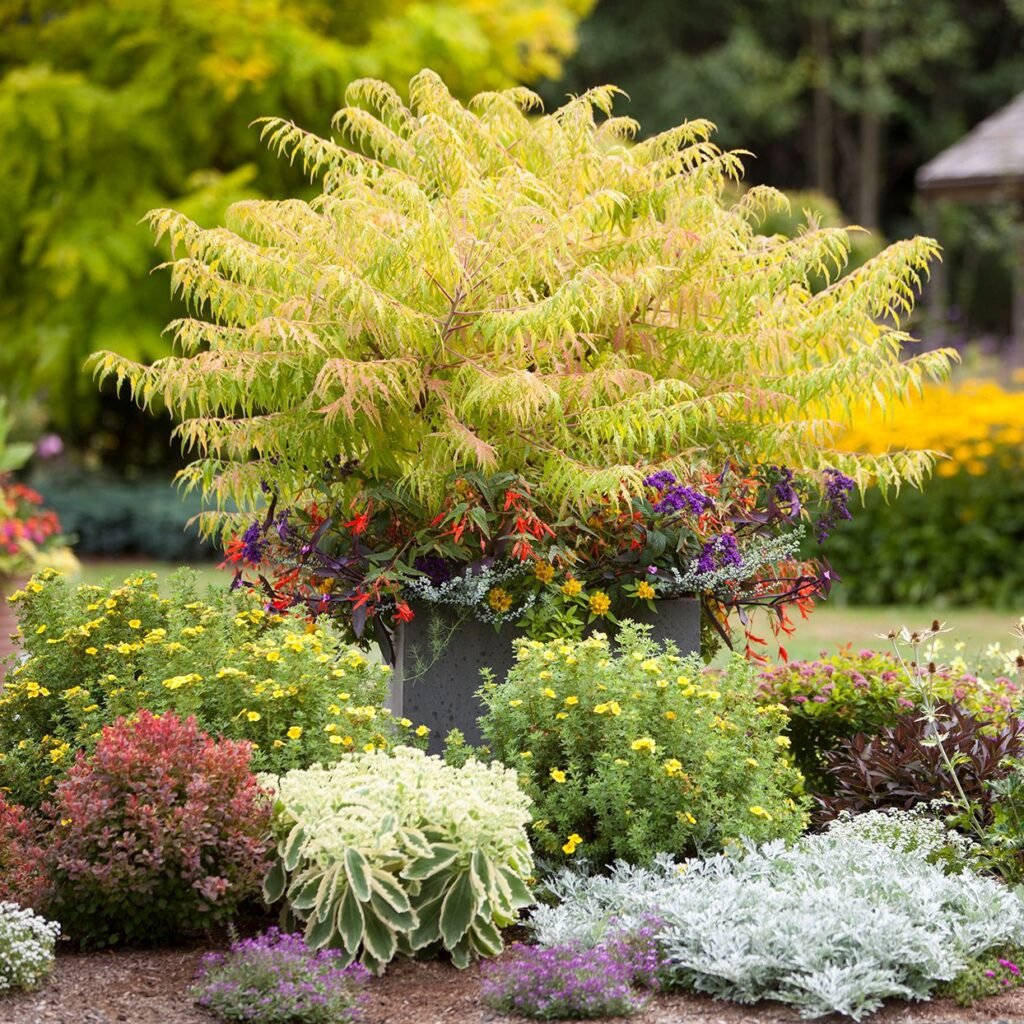
Sweetbox is a low-maintenance, shade-loving evergreen shrub known for its fragrant winter flowers.
Features
- Flowers: Tiny, white, highly fragrant flowers in late winter to early spring.
- Foliage: Glossy dark green leaves.
- Size: 2–4 feet tall and wide, ideal for borders.
Growing Tips
- Sunlight: Full shade to partial shade.
- Soil: Moist, well-draining soil enriched with organic matter.
- Watering: Regular watering during establishment; drought-tolerant once mature.
- Pruning: Minimal pruning needed; shape as desired.
Why It Works in Shade: Sweetbox thrives in the darkest corners of the garden, providing fragrance and evergreen foliage when most other shrubs are dormant.
General Tips for Planting Shade-Loving Shrubs
- Soil Preparation:
- Enrich shaded soil with compost or organic matter to improve fertility.
- Ensure good drainage to prevent root rot, which is common in low-light areas.
- Mulching:
- Apply 2–3 inches of mulch to conserve soil moisture, suppress weeds, and maintain soil temperature.
- Watering:
- Shade areas may retain more moisture; avoid overwatering but keep soil consistently moist, especially for newly planted shrubs.
- Fertilizing:
- Use fertilizers formulated for acid-loving plants if necessary.
- Fertilize in early spring before new growth appears.
- Pruning:
- Prune after flowering for flowering shrubs to maintain shape and encourage blooms next season.
- Remove dead or diseased branches anytime of the year.
Benefits of Mixing Shade-Loving Shrubs
Planting a variety of shade-tolerant shrubs offers several advantages:
- Extended Bloom Season: Combining different shrubs like azaleas and pieris ensures flowers from early spring to late winter.
- Texture and Color Variety: Mix foliage types—evergreen, variegated, and colorful new growth—to create visual interest.
- Wildlife Support: Diverse shrubs attract birds, bees, and butterflies, enriching your garden ecosystem.
- Low Maintenance: Shade-loving shrubs are generally resilient and require minimal intervention once established.
Common Mistakes to Avoid
- Planting in Deep Shade Only: While shade-loving shrubs tolerate low light, some indirect light is still necessary for optimal growth.
- Overwatering: Shaded soil retains moisture; excessive watering can cause root rot.
- Neglecting Soil pH: Many shade-tolerant shrubs prefer slightly acidic soil; alkaline soil can stunt growth.
- Crowding Plants: Allow sufficient spacing for airflow and healthy growth.
Final Thoughts
Shade-loving shrubs are essential for creating a balanced and thriving garden, especially in areas with limited sunlight. Plants like hydrangeas, rhododendrons, azaleas, Japanese pieris, and sweetbox not only survive but thrive in shaded conditions, offering flowers, fragrance, and year-round beauty.
By selecting the right shrubs and following proper planting, watering, fertilizing, and pruning practices, you can turn dark or neglected corners of your yard into lush, vibrant spaces. Incorporating these shade-loving shrubs adds depth, texture, and color, making your garden more diverse, appealing, and ecologically friendly.
Whether you are a beginner gardener or an experienced landscaper, planting shade-tolerant shrubs ensures that every part of your yard—even the shadiest—can be beautiful and productive. With patience and consistent care, these shrubs will reward you with beauty, fragrance, and greenery season after season.
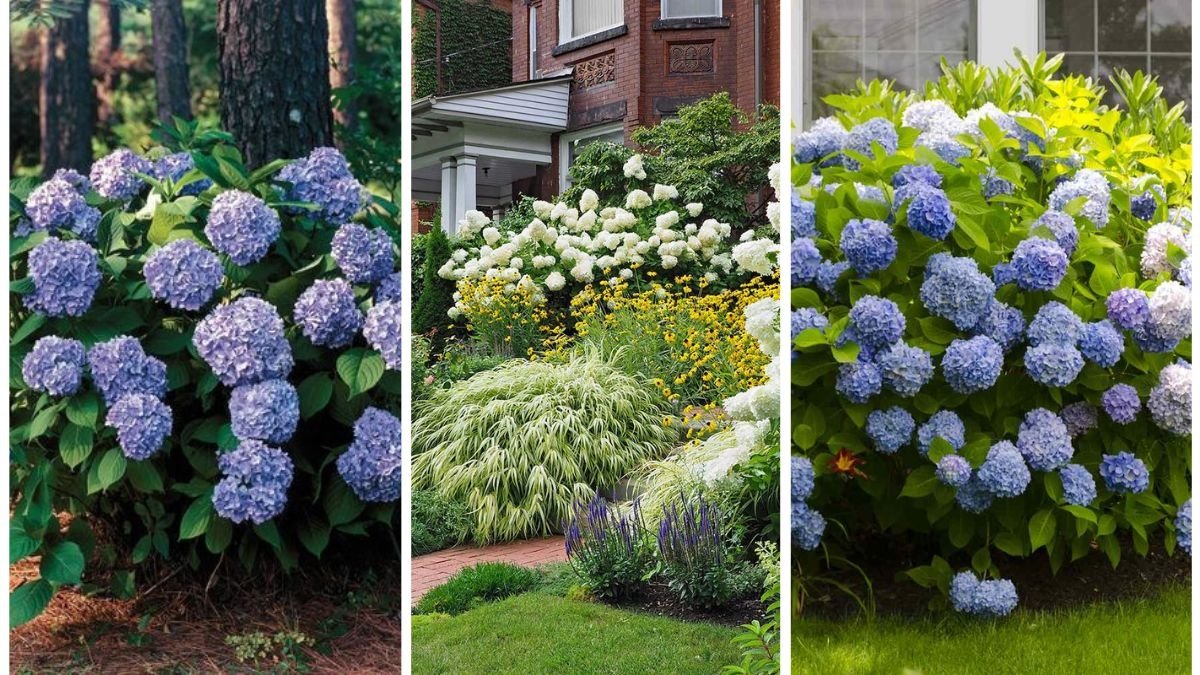
Leave A Comment